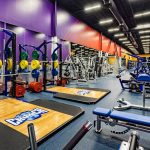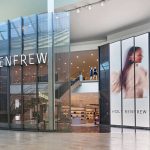At the One Goal Hockey Show in Toronto, Ontario, January 14-16, retailers got to see the new products that will hit shops for the 2007/2008 season. The show itself saw more traffic than last year, with some even estimating as much as a 30% increase. Vendors brought out new product that seemed to coincide with several trends including a separation of players into agile or powerful, customization of product, and attempts to distinguish composite sticks either through visible technology or through feel and weight.
As the pro game has become less about the trap and more about the breakaway, manufacturers have begun marketing to and creating product for the players at the front end of the goal scoring charge. Vendors are drawing a line through their product offering with finesse on one side and brute strength on the other. Nike/Bauer has separated its line into power, under the Supreme label, and agility, under Vapor, while Mission/Itech Hockey has its AG line for agility and XP line for power. In its line of protective gear, Easton has both the Synergy and the Stealth collections with Synergy aimed toward the powerful player, while Stealth will appeal to the more fleet of skate.
Composite sticks have become the norm as more players at lower levels adopt the technology, leaving a rather homogenous field separated mainly by color. This year, vendors began experimenting with visible technologies to help set their product apart from the rest of the sticks on the wall. Warrior Hockey introduced its Spyne system, which helps to create more stiffness in the blade, while Mission touts its Fuel stick, which it has labeled the lightest on the market with a feel that is more similar to that of wood. However, Rbk took much of the limelight with its O-stick that features arches on the bottom of the shaft to reduce drag, increase stiffness, and make the stick more snappy.
SEW was able to sit down with Michel Benoit, VP global product development for RBK/CCM to talk about how he sees the two brands and what his plans are for the future. Benoit has separated the brands to be run by two distinct teams to avoid any crossover or future confusion. His teams, he says, have “an absolute dedication to the passion of the brands.” CCM product will be designed with the history of the brand in mind, while RBK will try to gain market share in the 12-18 year old demographic and in the future of the sport. Currently, CCM is the larger of the two brands, but, said Benoit, RBK is growing fast.
Customization and personalization were also selling tools on the show floor as manufacturers sought to sell product that was tailor made or at least could be so for a customer. NikeBauer launched its iD program that will see kiosks launched in 10 shops in Canada and 15 in the U.S. where a customer can order custom Vapor XXX-Lite or Supreme One90 sticks with a variety of shaft, blade, and grip options present for comparison. The customer can even order their name printed on the name block on the shaft. The trend has trickled all the way down to mouthguards, where Shock Doctor has added multiple colorways to its product, and included the option of swapping out colors of the tether through the purchase of tether packs.
Though not an overall trend, Under Armour generated quite a few whispers as it now looks to protect this face after entering the hockey visor market. The move was a bit curious for the apparel manufacturer, but the company feels that its brand is strong enough at this point to be able to make its presence felt in a market that is mostly divided between just a few vendors. However, a rumor on the floor that one of those vendors had signed an exclusivity agreement with the NHL could put a damper on UAs most recent brand extension.















